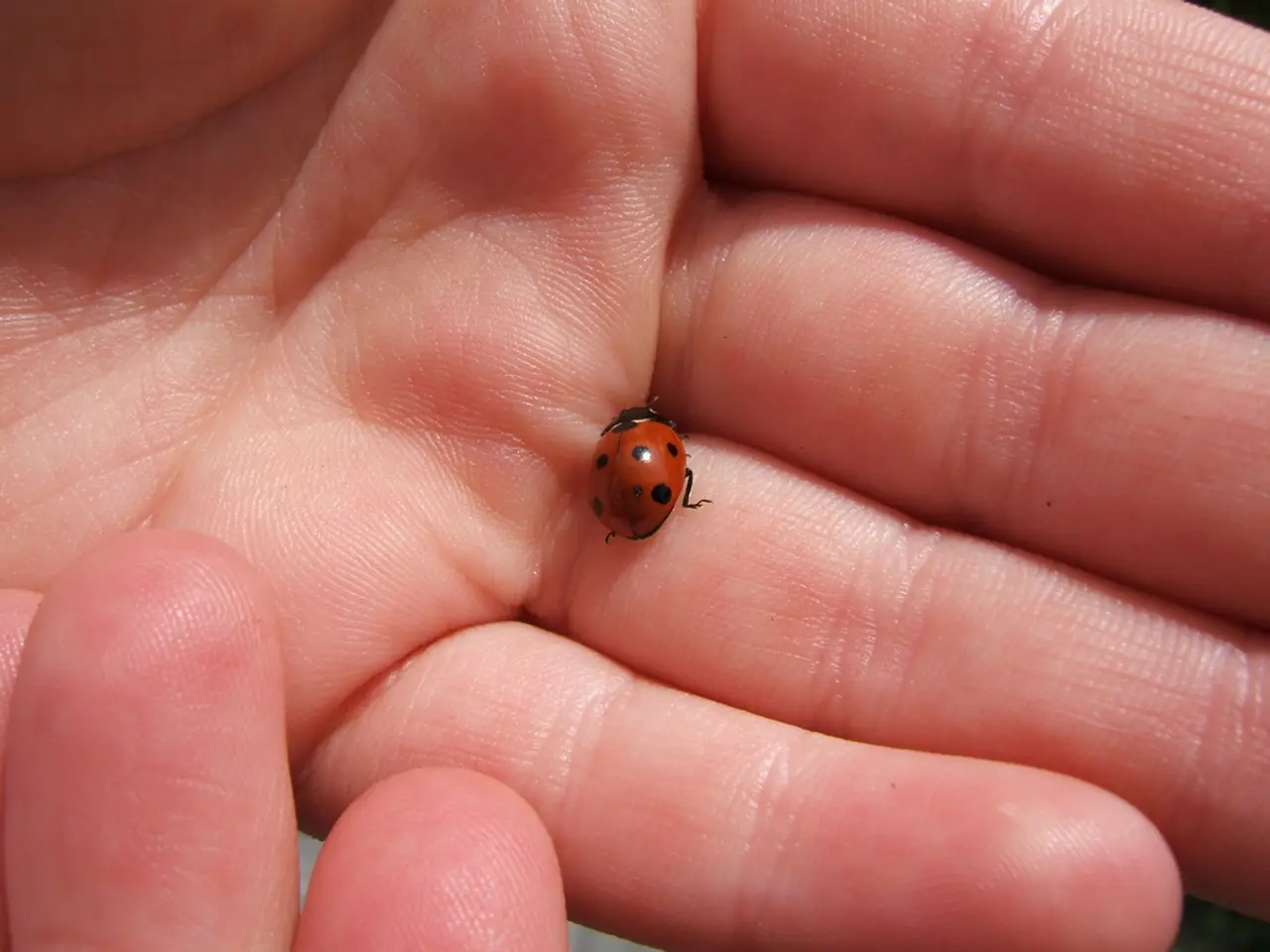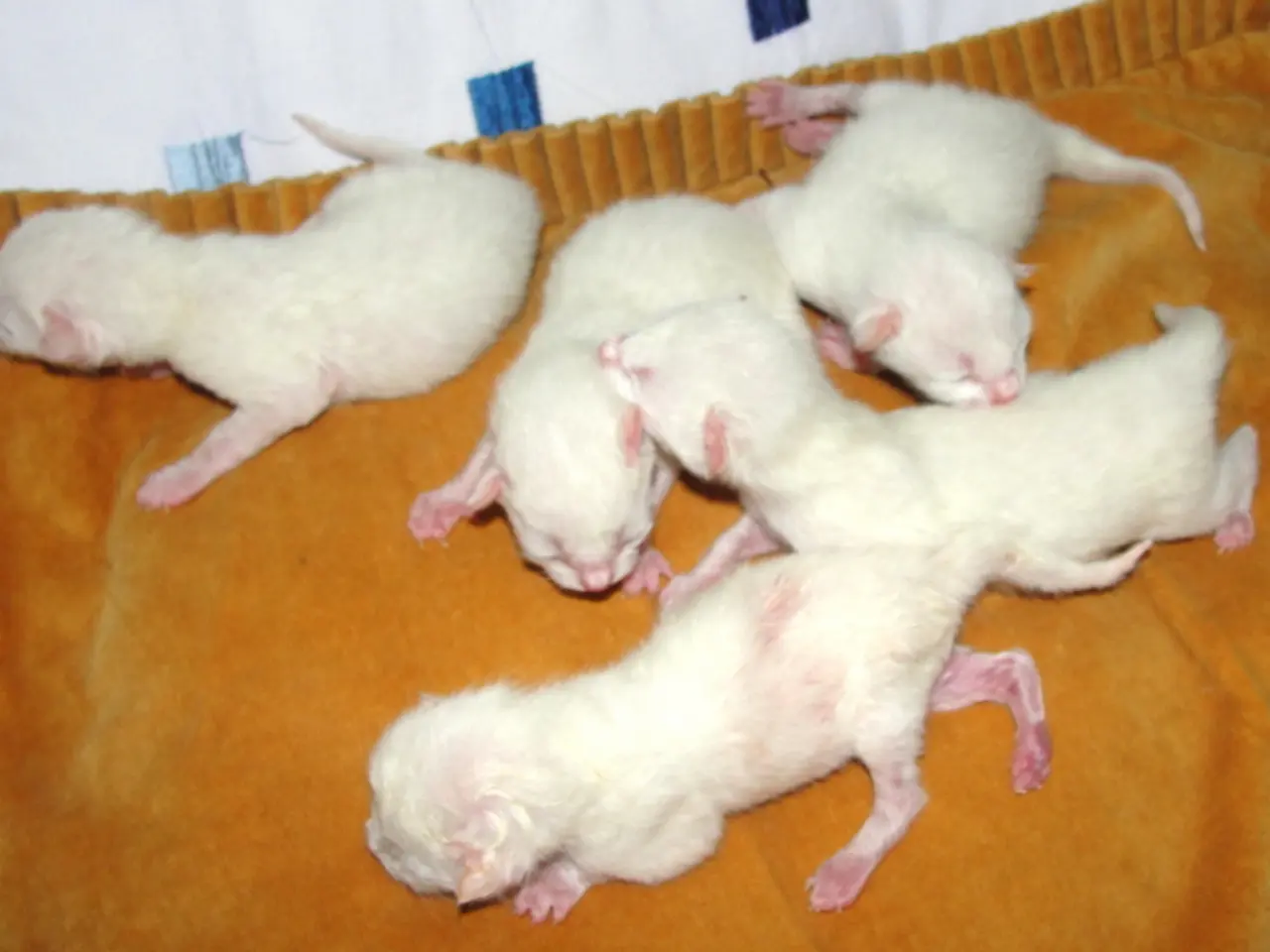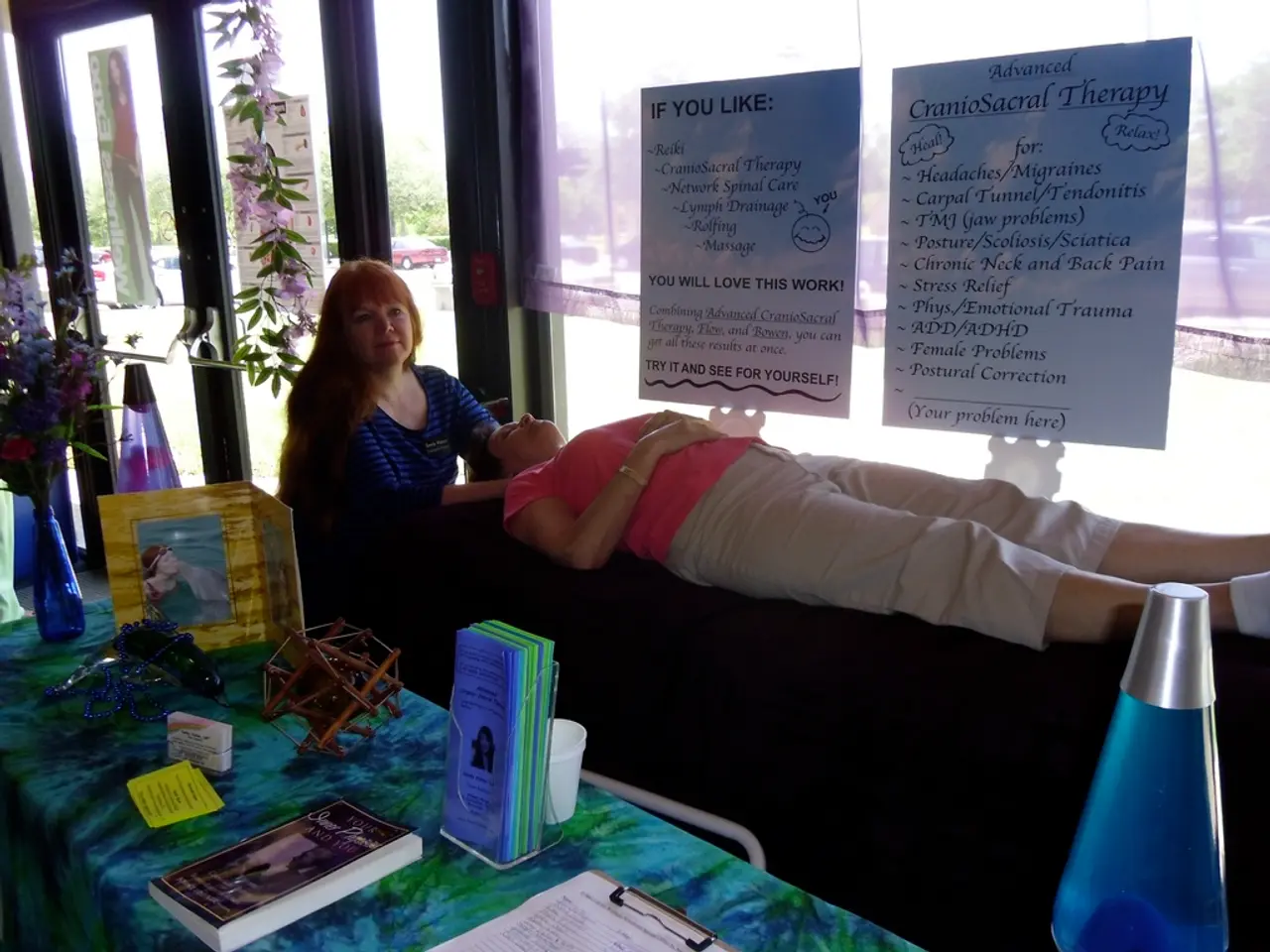Understanding Acral Peeling Skin Syndrome (APSS)
Skin Peeling Syndrome of Acral Type: Characteristics, Signs, and Remedies
Acral Peeling Skin Syndrome (APSS) is a rare, inherited skin condition that primarily affects the top layer of skin on the hands and feet. The condition, which has no known cure according to the National Organization for Rare Disorders (NORD), can sometimes spread to the arms and legs [1].
Inheritance Pattern
APSS is passed down through families in an autosomal recessive manner. This means that a person must inherit two copies of the mutated gene, one from each parent, to develop the condition [2].
Cause
The cause of APSS is linked to mutations in the TGM5 gene, which plays a crucial role in forming a structure called the cornified cell envelope. These mutations reduce the production of transglutaminase 5, an enzyme essential for the integrity of this structure. As a result, the cornified cell envelope becomes weaker, allowing the top layer of the skin to separate easily, leading to the characteristic peeling [3].
Diagnosis
Doctors diagnose APSS based on a medical history, physical examination, and sometimes a skin biopsy for confirmation. The condition's symptoms, which include painless peeling of the skin, are often noticeable from birth but can also become evident during childhood or later in life [4].
Treatment Options
Currently, there is no cure for APSS. However, treatment focuses on managing symptoms to improve comfort and reduce peeling. Strategies include:
- Moisturizers: Applying skin-softening ointments like petroleum jelly may help manage APSS symptoms, particularly when applied after a bath while the skin is still damp [5].
- Avoid Triggers: Minimizing exposure to environmental factors that may aggravate peeling, such as frequent hand washing or low humidity, can help reduce symptoms [5].
- Preventive Care: Regularly applying moisturizers, especially after washing hands, can help maintain skin hydration and reduce peeling [5].
Important Considerations
If a person is concerned about the risk of passing the condition to a future child, or if they would like to check if they are a carrier of the gene mutation, a doctor may be able to refer them for genetic testing [6].
It's worth noting that APSS can be misdiagnosed due to symptoms being similar to other skin conditions, such as epidermolysis bullosa simplex. If you or your infant is showing any symptoms of APSS, it's important to seek medical advice promptly [7].
[1] National Organization for Rare Disorders (NORD). (n.d.). Acral Peeling Skin Syndrome. Retrieved from https://rarediseases.org/rare-diseases/acral-peeling-skin-syndrome/
[2] Orphanet. (2016). Acral peeling skin syndrome. Retrieved from https://www.orpha.net/consor/cgi-bin/OC_Exp.php?lng=EN&Expert=300
[3] Orphanet. (2016). Acral peeling skin syndrome. Retrieved from https://www.orpha.net/consor/cgi-bin/OC_Exp.php?lng=EN&Expert=300
[4] National Organization for Rare Disorders (NORD). (n.d.). Acral Peeling Skin Syndrome. Retrieved from https://rarediseases.org/rare-diseases/acral-peeling-skin-syndrome/
[5] National Organization for Rare Disorders (NORD). (n.d.). Acral Peeling Skin Syndrome. Retrieved from https://rarediseases.org/rare-diseases/acral-peeling-skin-syndrome/
[6] National Organization for Rare Disorders (NORD). (n.d.). Acral Peeling Skin Syndrome. Retrieved from https://rarediseases.org/rare-diseases/acral-peeling-skin-syndrome/
[7] National Organization for Rare Disorders (NORD). (n.d.). Acral Peeling Skin Syndrome. Retrieved from https://rarediseases.org/rare-diseases/acral-peeling-skin-syndrome/
Skin-care products, such as moisturizers, can help manage symptoms of Acral Peeling Skin Syndrome (APSS), with petroleum jelly being one example [5]. Understanding the inherited pattern of APSS can help families understand their risk of passing the condition to future generations [2]. The science behind APSS involves mutations in the TGM5 gene, affecting the production of transglutaminase 5 and weakening the skin's cornified cell envelope, leading to skin-conditions like APSS [3].




